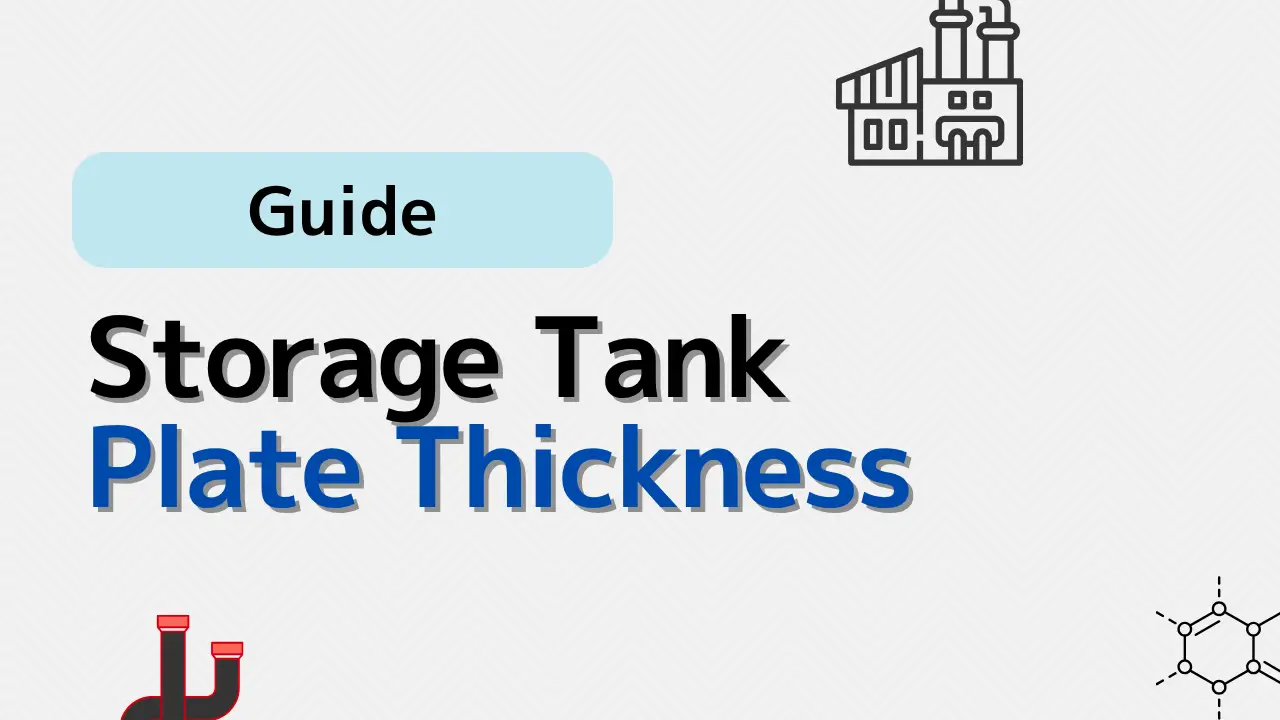When designing or inspecting storage tanks in industrial plants, one basic but important question comes up:
How thick should the tank wall be?
The answer depends on size, pressure, material, and regulations—but this guide will give you a simple starting point for understanding plate thickness in “normal” atmospheric tanks.
Let’s break it down in plain language.
🛢 What Is a “Normal” Tank?
In this context, a normal tank means:
- Unpressurized (atmospheric) tank
- Made of carbon steel
- Used for storage, not chemical reaction
- Above-ground and usually cylindrical
- Used in places like chemical plants, wastewater treatment, or food factories
📏 Typical Plate Thickness Values
Here’s a simple rule of thumb from real-world practice (Japan-based plants):
| Tank Diameter | Typical Plate Thickness (t) |
|---|---|
| ~1 meter | 4.5 mm (t=4.5) |
| ~2–3 meters | 6 mm (t=6) |
| ~4–6 meters | 9 mm (t=9) |
These are based on practical experience and fabrication standards—not code-calculated minimums.
⚠️ Caution: These Are Not Design Standards
- For official designs, use API 650, JIS B standards, or your local regulations.
- Consider corrosion allowance, wind load, seismic design, and internal equipment.
- For pressurized tanks or hazardous materials, much stricter standards apply.
🧰 Real-World Application
These rough values are helpful:
- During early planning and cost estimation
- For replacement tank sizing
- When reviewing fabrication drawings from vendors
If a vendor’s drawing shows a 6-meter tank with a 4.5 mm plate, something may be wrong.
✅ Conclusion
For atmospheric tanks made of carbon steel, typical plate thickness increases with tank diameter.
Use the real-world values as a quick reference, but always check official design codes before finalizing anything.
Knowing these basic numbers can help engineers and operators make smarter decisions during plant design and maintenance.
